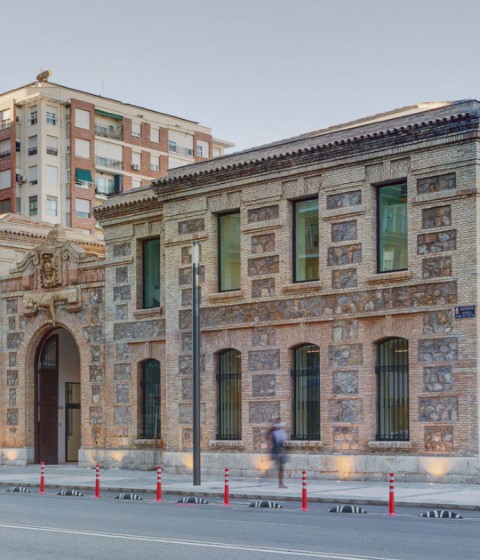
Project description by Ecoproyecta
This project emerged from the Master Plan for the Snow Wells of Sierra Espuña, which included the cataloging and analysis of the state of conservation of these ancient ice factories. Thanks to this effort, in November 2022, the cultural landscape of the wells was declared a Cultural Heritage Site (BIC) in the category of "ethnographic place of interest." Among the urgent measures outlined in the Master Plan was the restoration of wells number 11 and 13 due to their uniqueness, accessibility, and state of conservation. Despite significant damage and the collapse of a substantial part of their domes, they still retained enough structure and data for their recovery. Well, number 11 stands out as the largest in Sierra Espuña, posing a significant structural challenge. Well, number 13 preserved part of its original dome, providing valuable information about its geometry.
Objectives and Restoration Methodology:
The Challenge of Working with Traditional Techniques and Materials. This project aimed for the comprehensive restoration of two wells, with the primary goal of recovering their original geometry, thus having two complete examples within the set of 28 wells. Restoration was carried out using traditional construction techniques and materials, namely, stone and brick masonry, accompanied by lime mortar. Before this intervention, no complete well remained in Sierra Espuña following its original structure, as the two previously restored ones were erected using metal structures, diverging from traditional techniques.

Restoration of two snow wells in Sierra Espuña by Ecoproyecta. Photography by David Frutos.
Two Wells, Two Construction Systems. We encountered two distinct typologies: well number 11 with a mixed construction dome (stone/brick), and well number 13 with a stone masonry dome built by layering. This resulted in domes with different shapes, one resembling a hemisphere and the other a cone. We chose to employ these traditional construction systems to preserve the authenticity of the original typologies.
Visitor Experience.
Our ultimate goal was not to restore the original use of these ice factories, which is no longer relevant today. Instead, we aimed to enable visitors to explore these unique structures and learn about the history of the ice trade in the past. To enhance the visitor experience, new access elements were added, such as an observation deck and staircase in Well 11, as well as a walkway crossing the void in Well 13. These elements, designed and constructed in wood, distinguish themselves from the original materials.













































